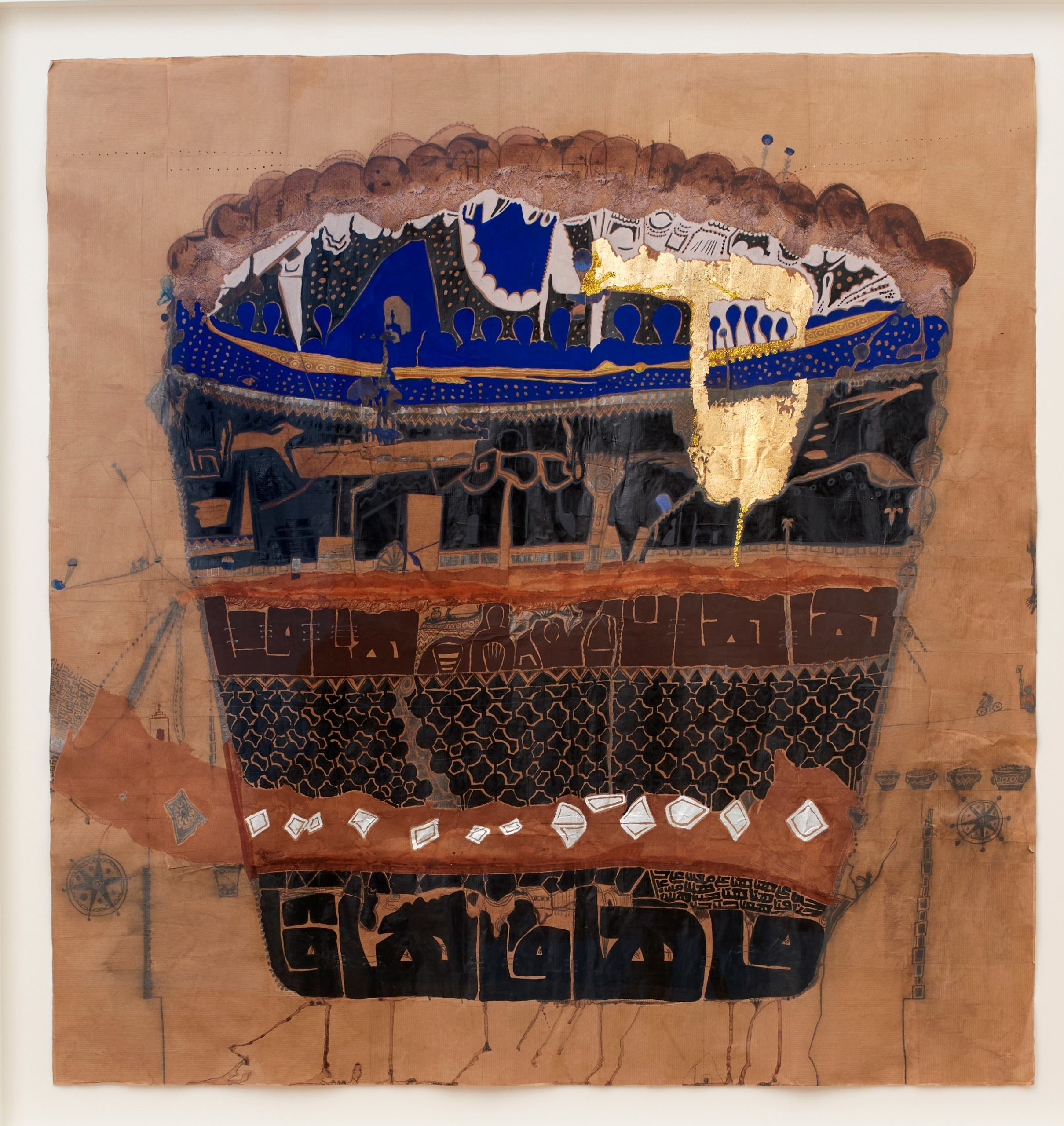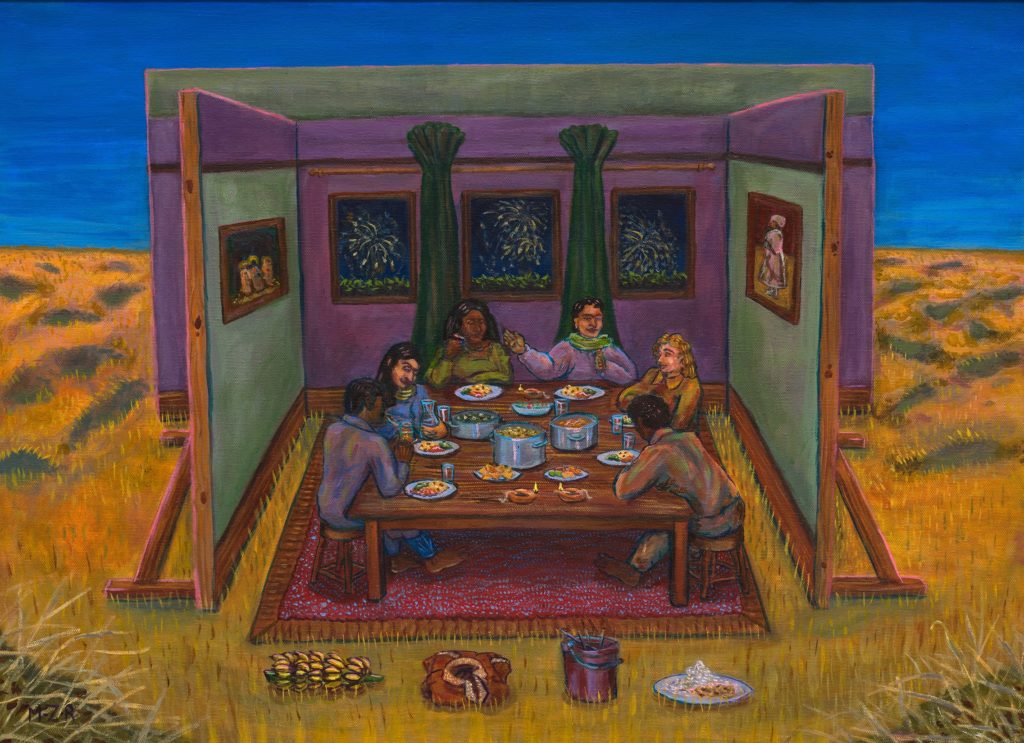London Gallery Weekend x Government Art Collection
In a partnership with London Gallery Weekend that began in 2024, the Government Art Collection acquires artworks from galleries participating in the event.
What is London Gallery Weekend?
London Gallery Weekend is an annual event that takes place over three days, each focusing on a different area of London. Free to attend, it provides everyone and anyone an opportunity to discover and explore London’s world-class gallery scene, celebrating the city’s diverse cultural and creative communities. It attracts both an international audience and, through CVAN and Art Fund, supports curators and artists from outside London to attend.
‘We have long been waiting for something like London Gallery Weekend (LGW) as London can feel incredibly disparate, isolating, and large. LGW has very quickly managed to create a community and support system for the participating members, and more than that, an exciting platform for artists in the traditional gallery space, which is beginning to rival Frieze week. LGW’s partnership with the Government Art Collection celebrates the local arts scene and the Collection in tandem and provides vital financial support to the participating galleries and artists through their acquisition fund.’
— Richard Saltoun Gallery

A London Gallery Weekend x Government Art Collection acquisition. Fathi Hassan, Eternity Container, 2023. Photo © Richard Saltoun
‘Since its inception London Gallery Weekend has succeeded in providing an important focus of energy within and towards London galleries, showcasing the quality of artistic programming in this sector. [The Collection’s] partnership with LGW greatly supports the position it has established in the city’s cultural landscape, and beyond, with demonstrable recognition of the contribution of artists and commercial galleries.’
— Phillida Reid Gallery
How does the Government Art Collection support artists during London Gallery Weekend?
During the weekend, curators from the Collection visit participating galleries and choose one or a series of works by artists on display to bring into the Collection. Curators research the artists, looking to expand the collection to represent the diversity of the UK. The work is assessed to align within our Collections Development Policy and the final decision sits with the Advisory Committee on the Government Art Collection.
This new partnership demonstrates the Government Art Collection’s commitment to supporting contemporary artists and bringing their work to a wider audience through their display in government buildings around the world.
In 2024, the Collection acquired artworks by artists Fathi Hassan (represented by Richard Saltoun Gallery) and Mohammed Z. Rahman (represented by Phillida Reid).
‘It’s incredibly prestigious for my work to enter the Government Art Collection. Eternity Container has always represented Nubia to me (which means “gold” in ancient Egyptian), containing and preserving the memory of man through the centuries. This work safeguards an essential symbol of Nubian matriarchal culture, the vase. It’s also a homage to my grandmother Munira, who used to go to the market to shop with a similar container, embroidered and adorned with the patterns of the desert.’
— Fathi Hassan, artist

A London Gallery Weekend x Government Art Collection acquisition. Mohammed Z. Rahman, Divali, 2024. Courtesy of The Artist and Phillida Reid. Photo credit: Benjamin Westoby
‘The Government Art Collection does well to acquire works which engage emotively and critically with migrant life and history in the UK. I hope the presence of my work in the collection will inspire courage in its audiences to act in the interests of solidarity, care and love across communities and borders.’
— Mohammed Z. Rahman
-
Mohammed Z. Rahman, Divali, 2024
This painting is a celebration of Divali (Diwali), the Hindu festival of lights, which includes the artist’s Hindu and Sikh friends in the UK context. Rahman introduces an element of surrealism to the scene by juxtaposing an evening dining scene and summer noon sky. The artist also creates a contrast between life and death, blossom and decay through juxtaposing the dinner-table scene, full of life, with the landscape beyond. The scene takes place within a three-walled structure similar to a stage set, highlighting the precarious nature of such gatherings, and the need to actively create and uphold the conditions for celebration, community and solidarity.
Laid out on the table is a vegetarian meal consisting of South Asian dishes, including saag paneer, samosas, biryani and tofu curry, which the artist has historically prepared for the Divali feast. On the wall on the left hand of the image is a picture depicting a scene from the ancient epic text Ramayana. In it, Lord Rama, Sita and Lakshmana triumphantly return from their exile through a dark forest that is lit with diva lamps. On the opposite wall hangs a portrait of Guru Hargobind, the sixth guru in the Sikh faith, whose release from Mughal captivity under the emperor Akbar in 1619 is marked as part of the Sikh celebration Bandi Chhor Divas.
The row of objects in the foreground carry symbolic meanings, including references to wider histories of South Asian diasporas and the artist’s personal experience in relation to the festival. The banana branch gestures to Hindu-Muslim solidarity in memory of customary tributes given to neighbouring Hindu villages to the artist’s ancestral village in rural northeast Bangladesh. The shearling jacket alludes to the shared memory of migrants adjusting to colder climates. The bucket of extinguished sparklers speaks playfully to stories of less-than-desirable fire safety. The plate of roti and rice signals the power of food to unite dispersed communities.
Learn more about the artist.
-
Fathi Hassan, Eternity Container, 2023
This work draws on the visual traditions of Nubian culture to explore what is lost and what becomes obscured during cultural change. Hassan’s family are of Nubian and Egyptian descent and were forced to leave their ancestral home in southern Egypt in the 1950s when the construction of the Aswan Dam flooded the area in which they lived, creating what is today Lake Nasser. Moving to Naples in his twenties to study art, Hassan sought to bring to the surface the Nubian culture of his ancestors by reapproaching calligraphy as a form of cultural preservation. In Naples, Hassan became influenced by the Kufic and Riqqa styles of Arabic calligraphy and, over time, developed the distinctive visual approach that he has since termed ‘sign-paintings,’ in which he fuses calligraphy and abstraction to create new kinds of cultural artefact.
Eternity Container exemplifies this technique. Stringing together repeated letter forms that at first glance appear to be sentences and yet cannot be read, Hassan presents us with a calligraphic construction that feels familiar but the meaning of which remains elusive. In choosing form over function, Hassan gives the work a rhythmic quality, allowing our eye to follow the letter-forms while taking in the wider composition of the vase – which for Hassan represents the transfer of cultural knowledge. The vase’s stacked levels come together to form the ‘container’ of the title; its blue interior drawing our eye to its mysterious contents. Around the vessel’s edges, Hassan lays out paths to unknown places, dotted with compass markings, strewn artefacts and nameless dwellings.
Learn more about the artist.



